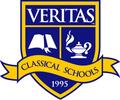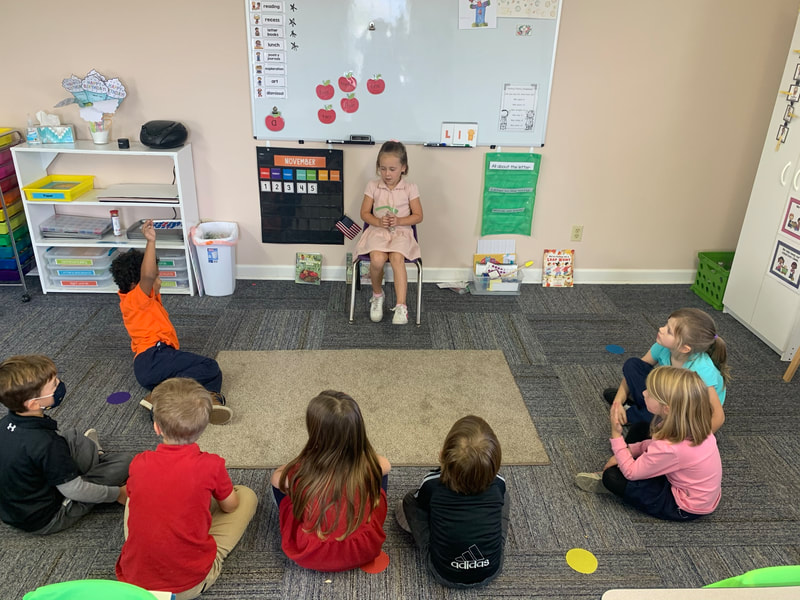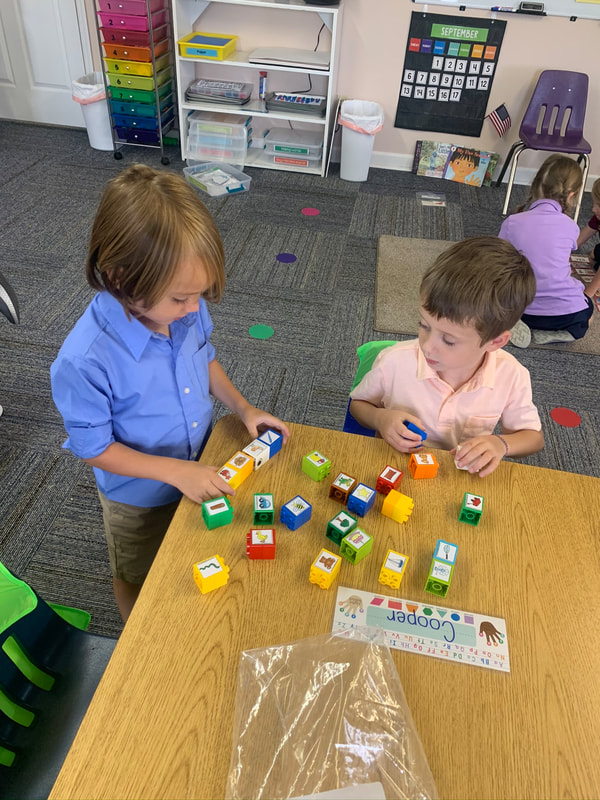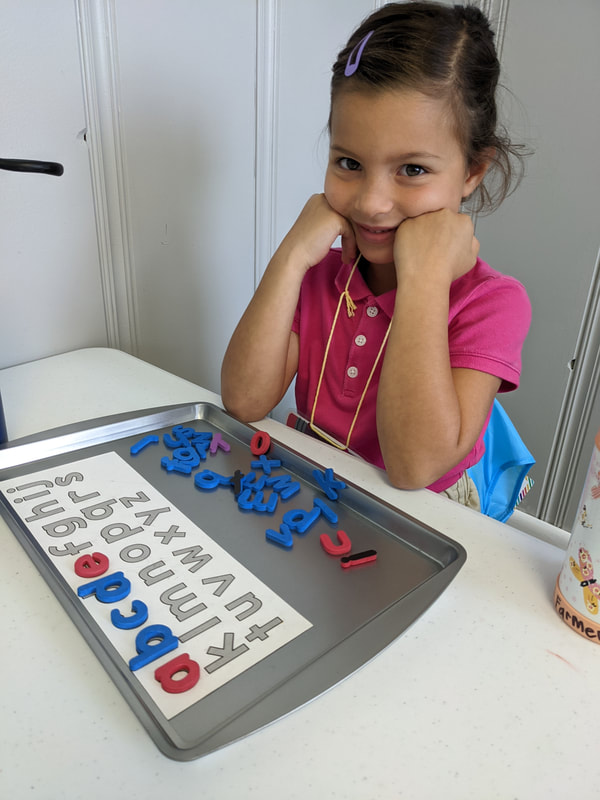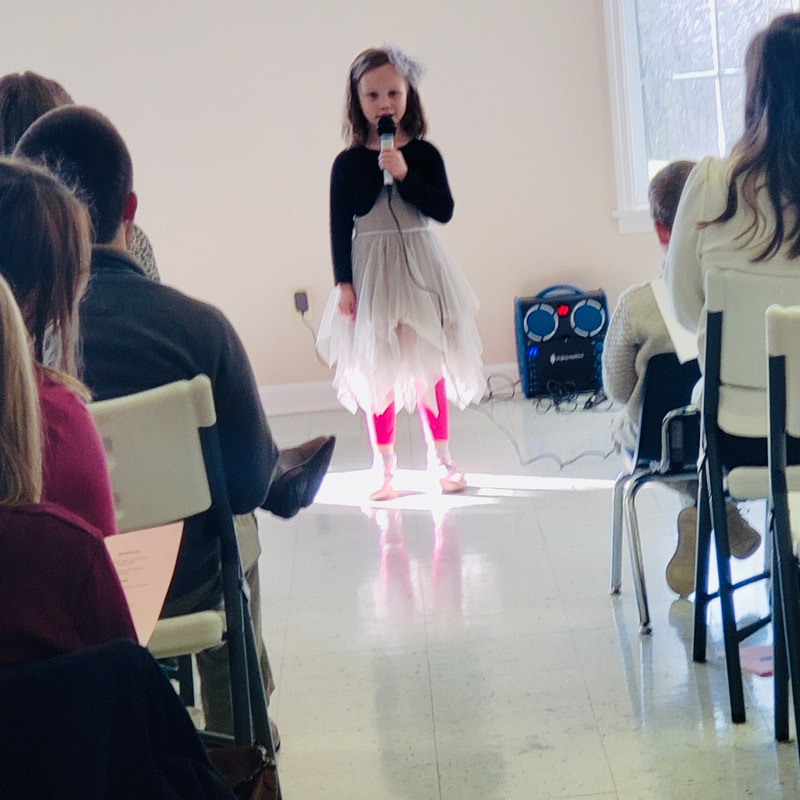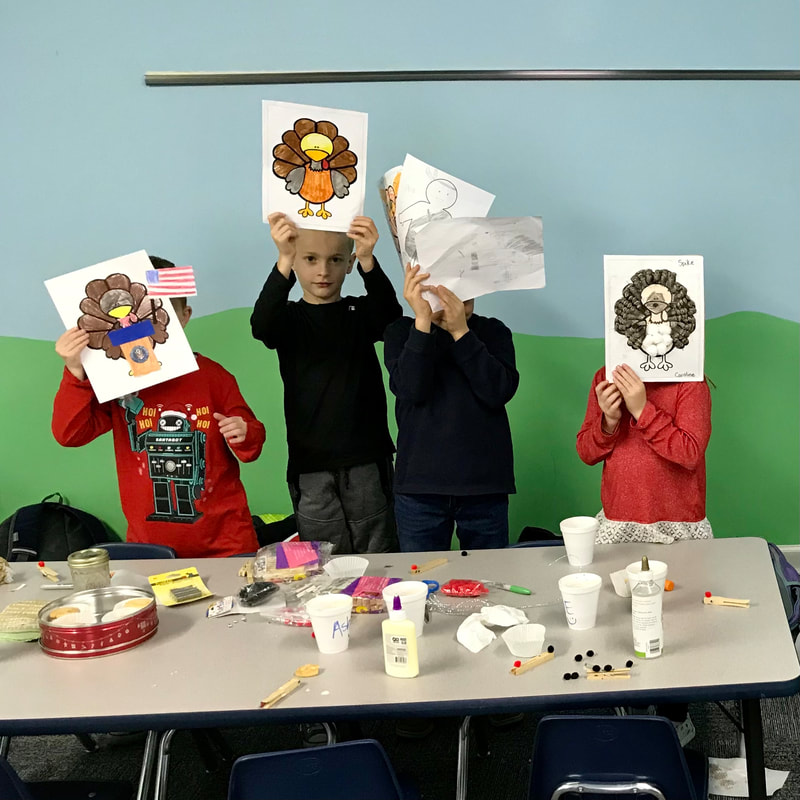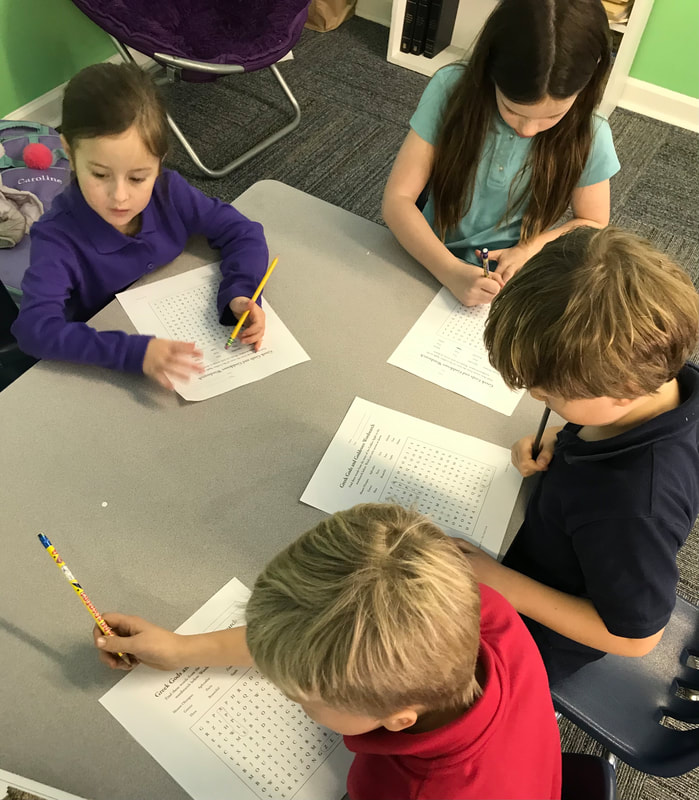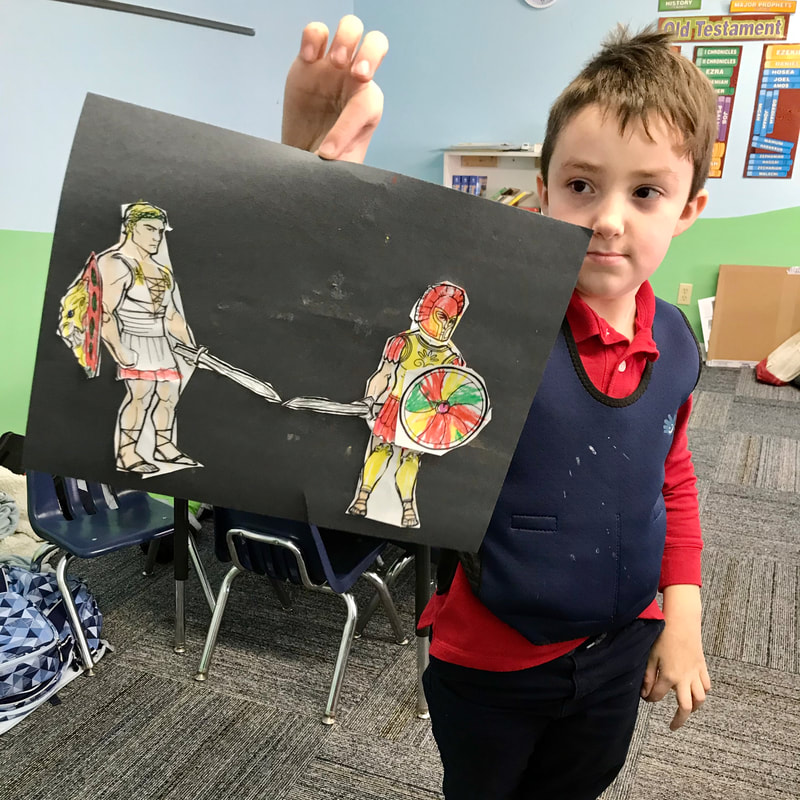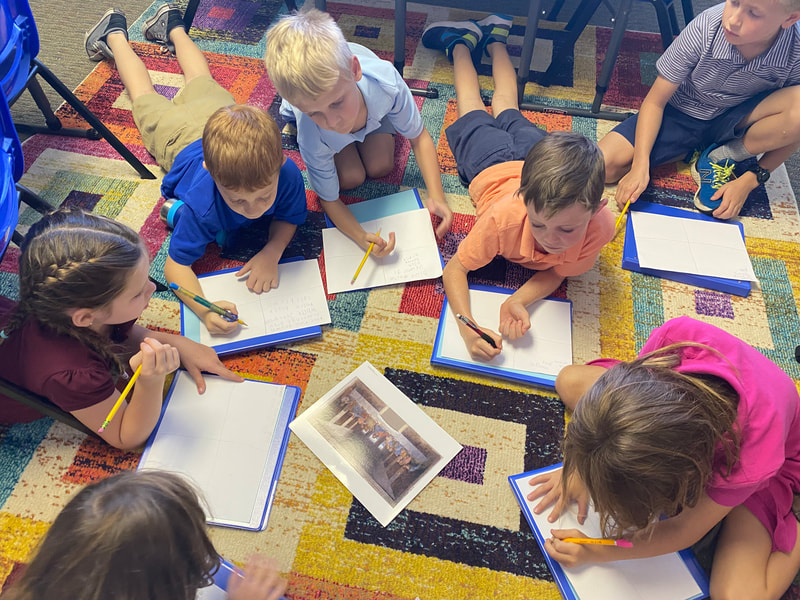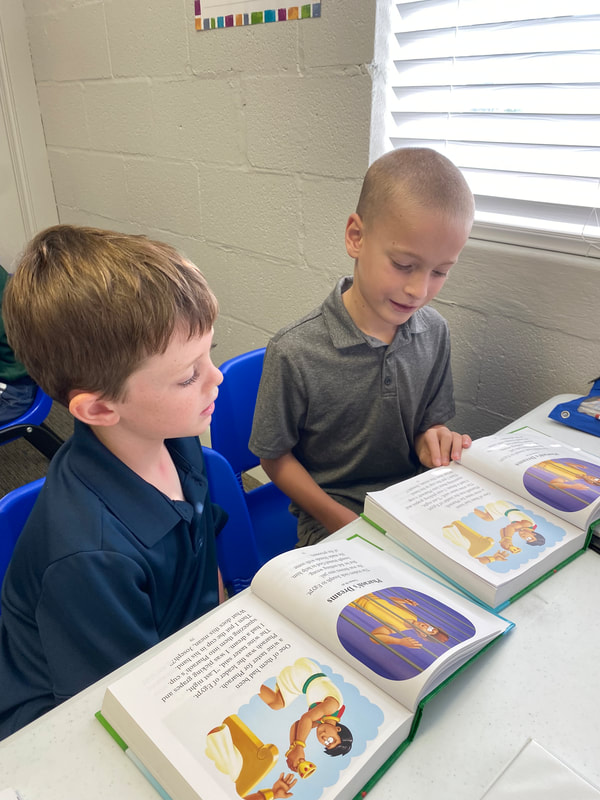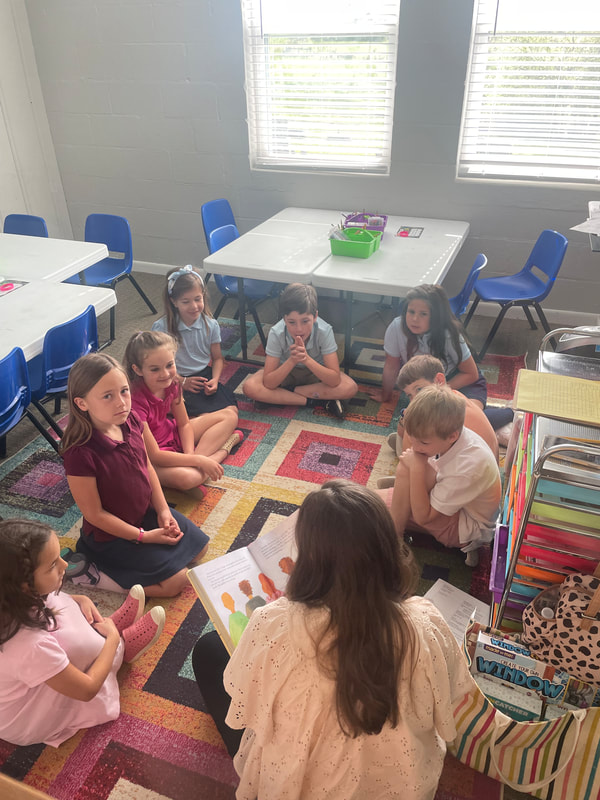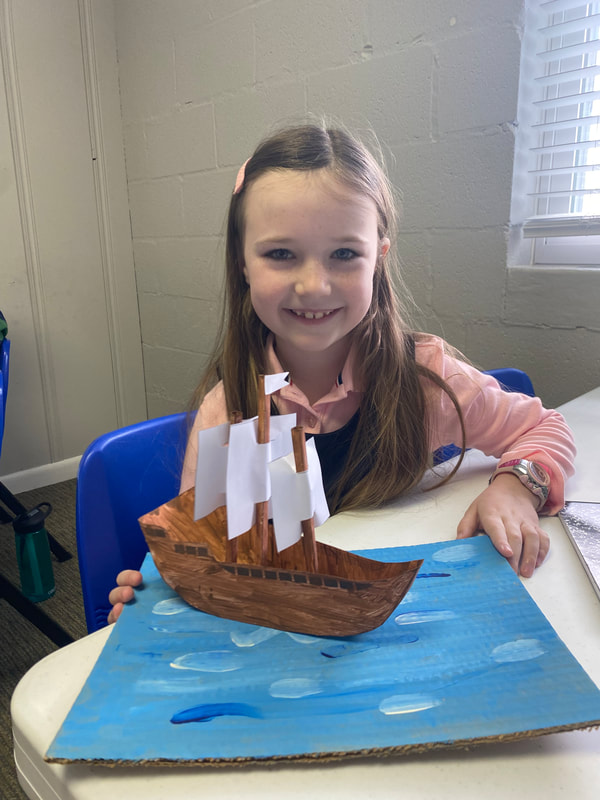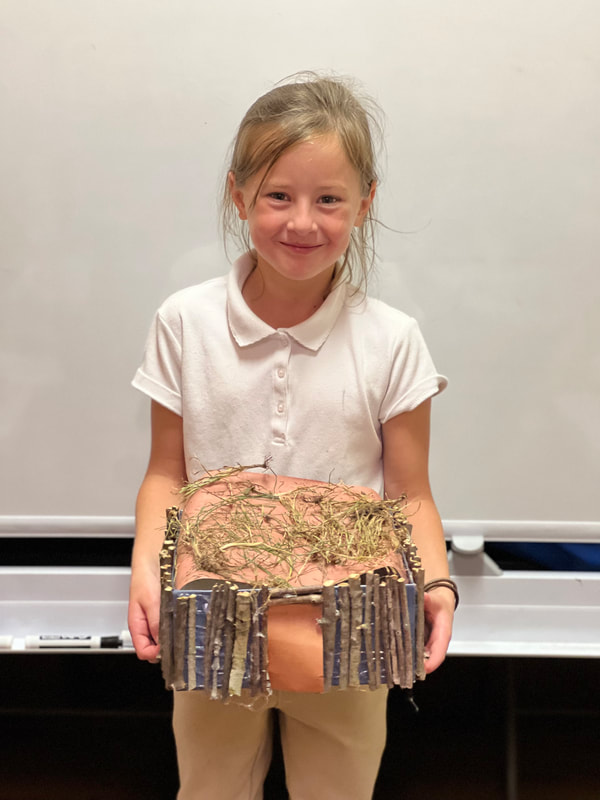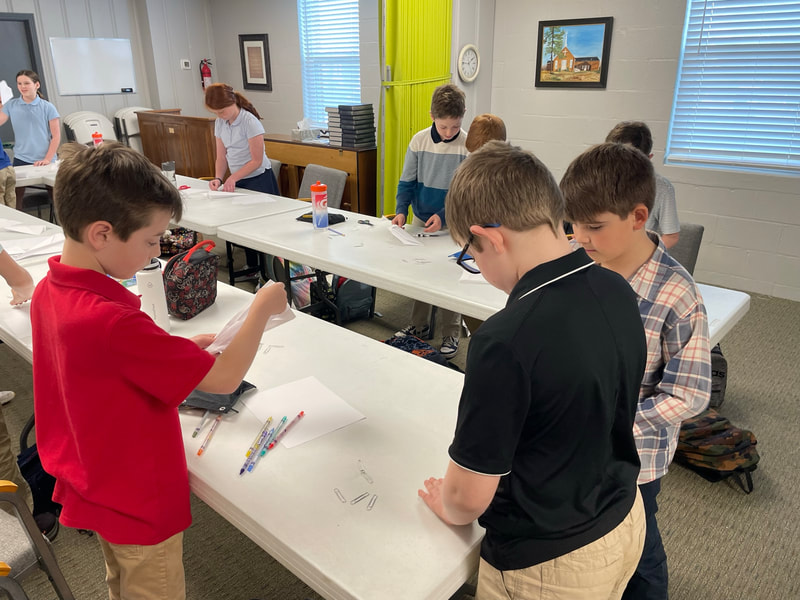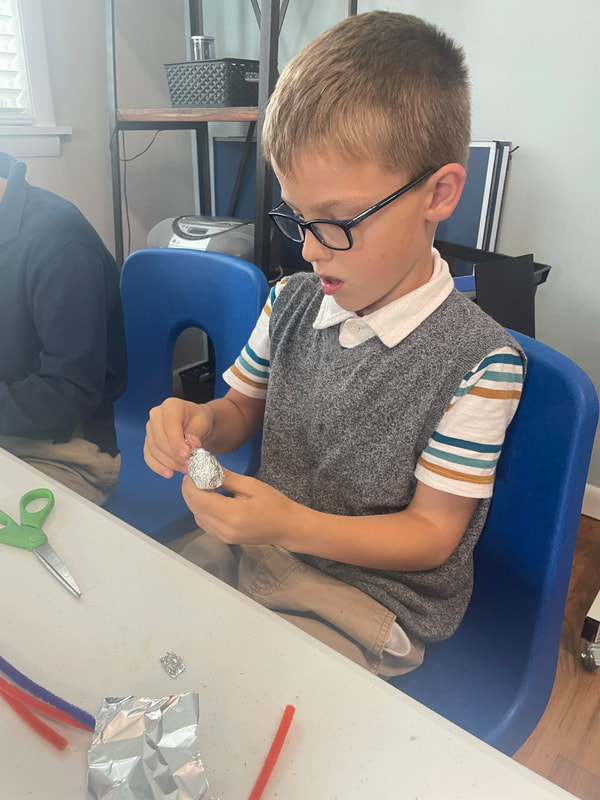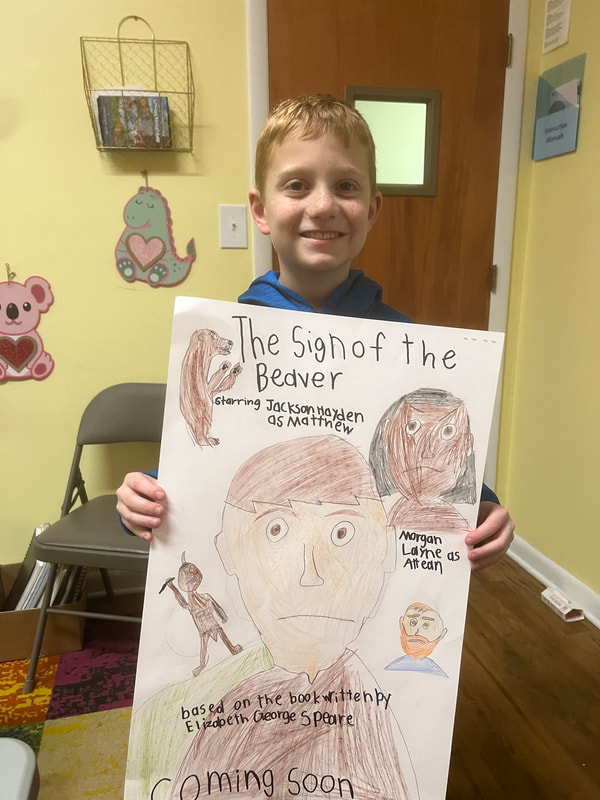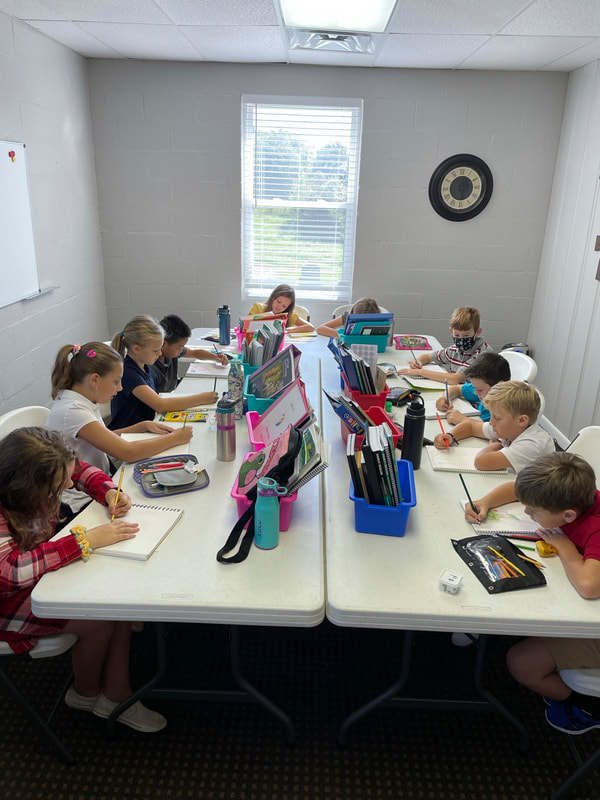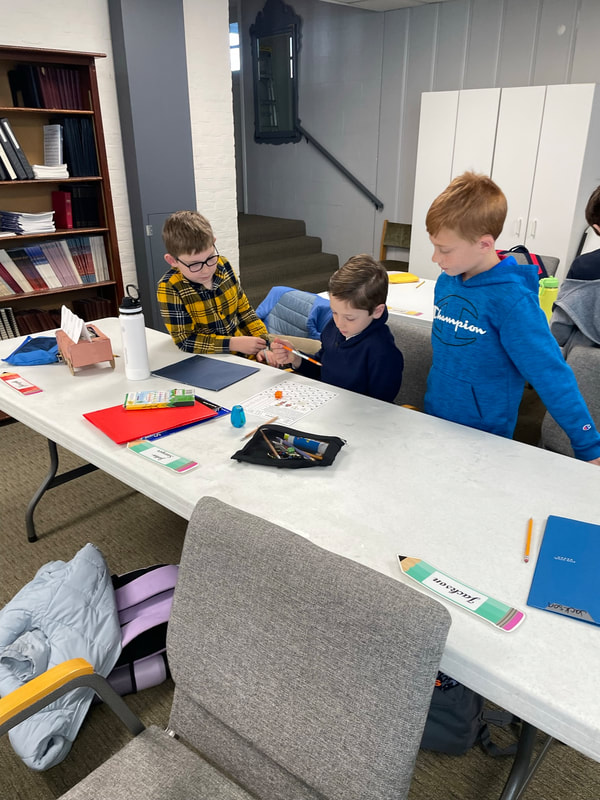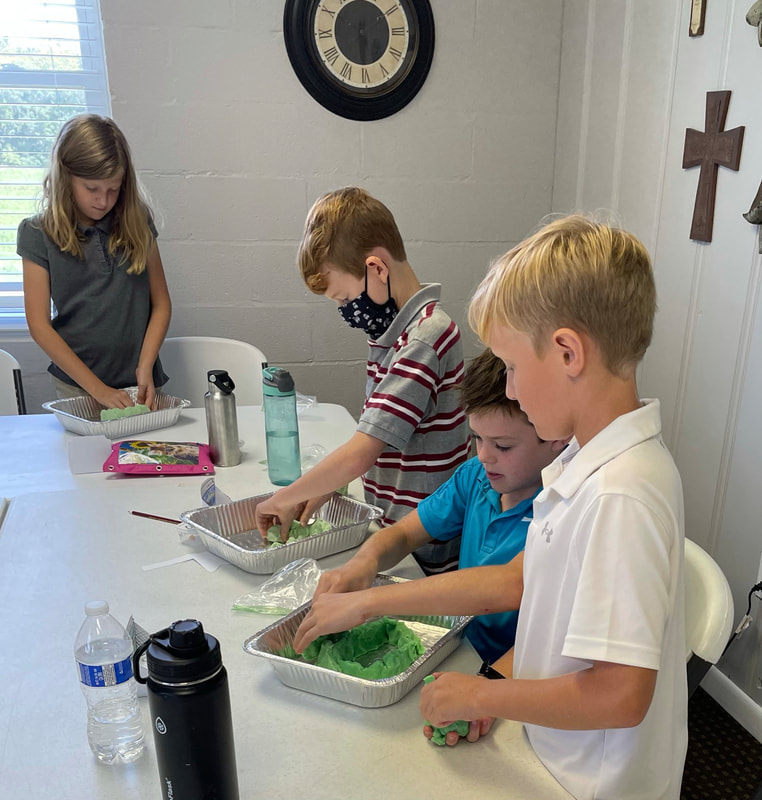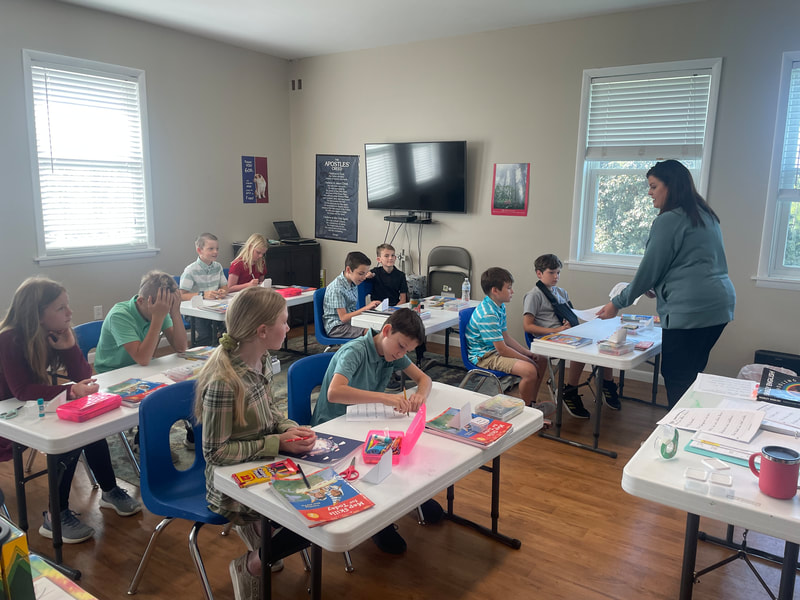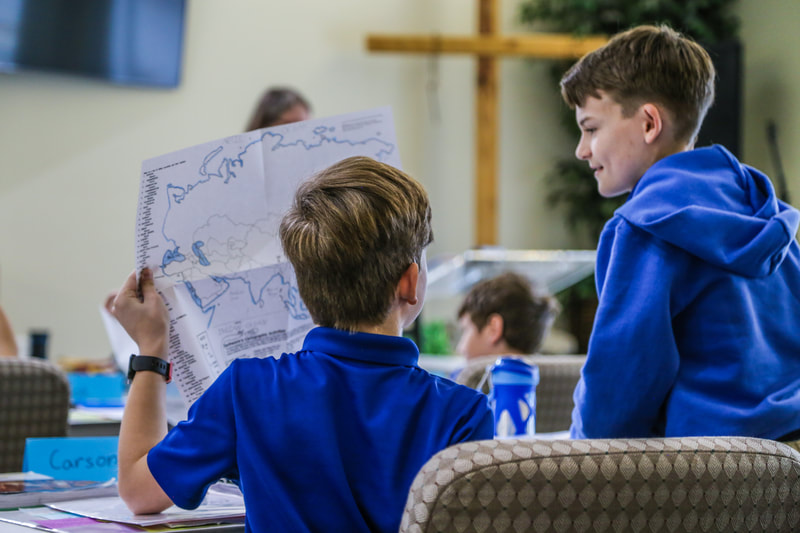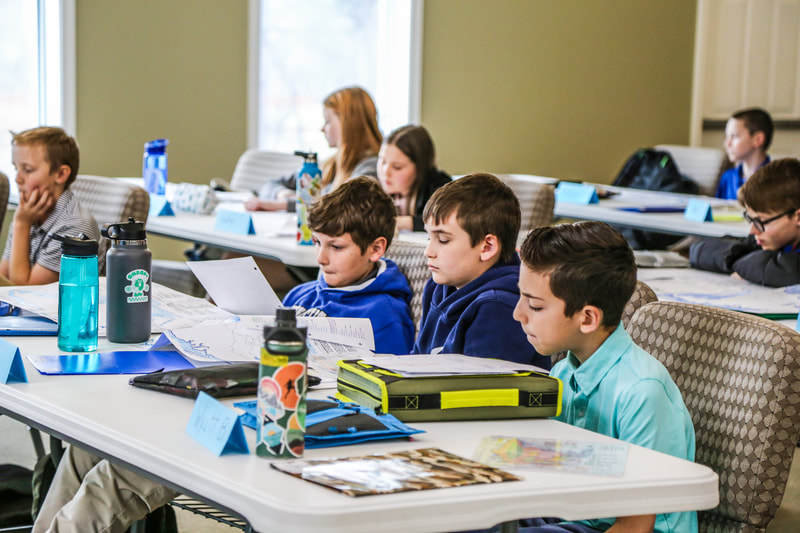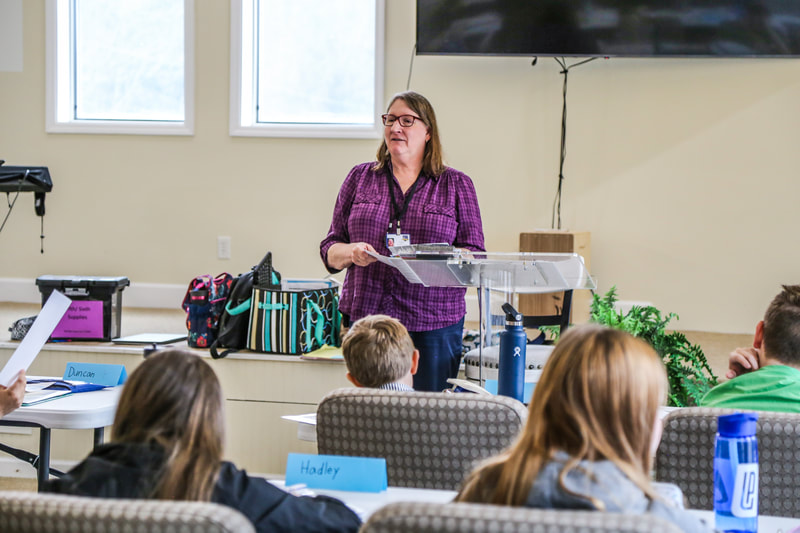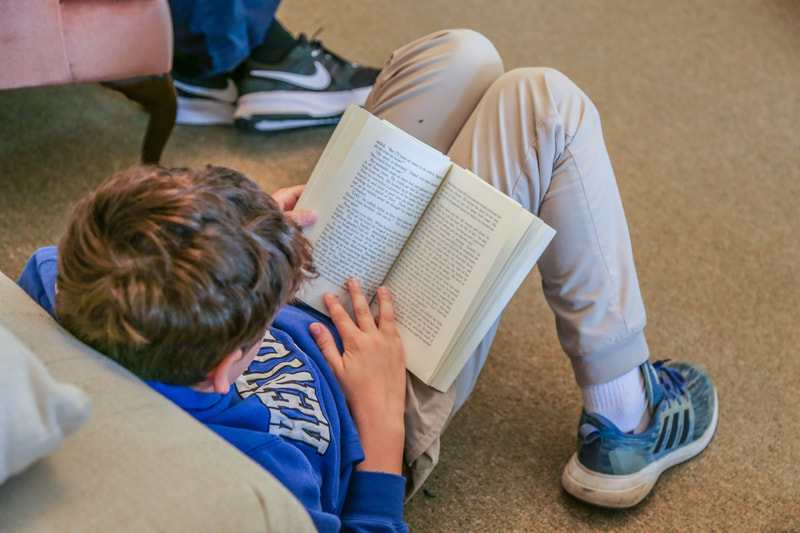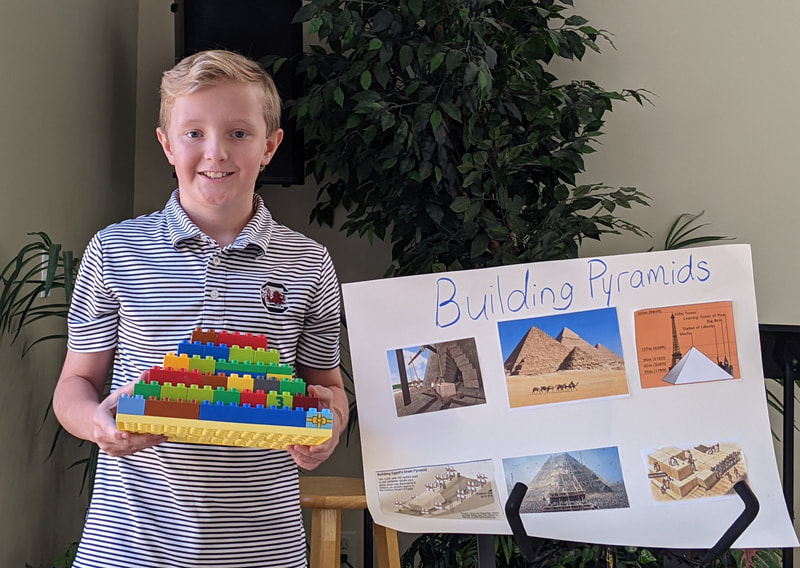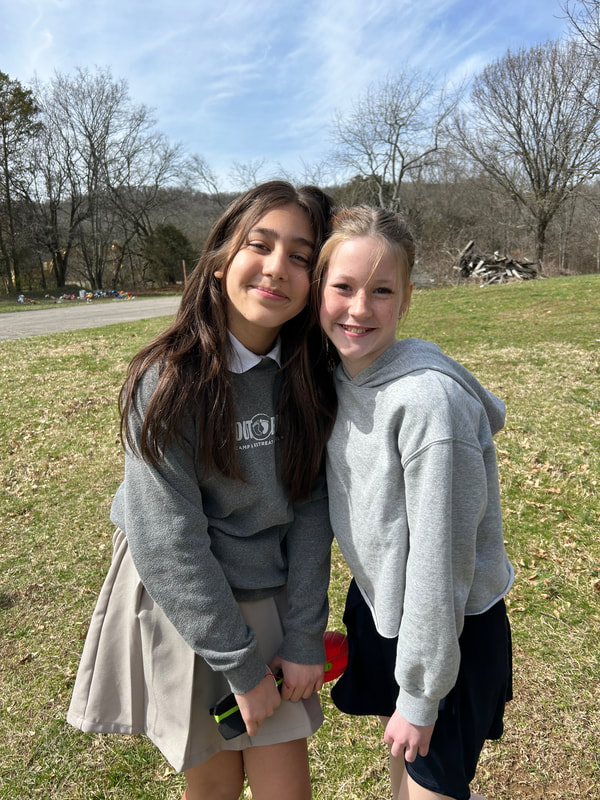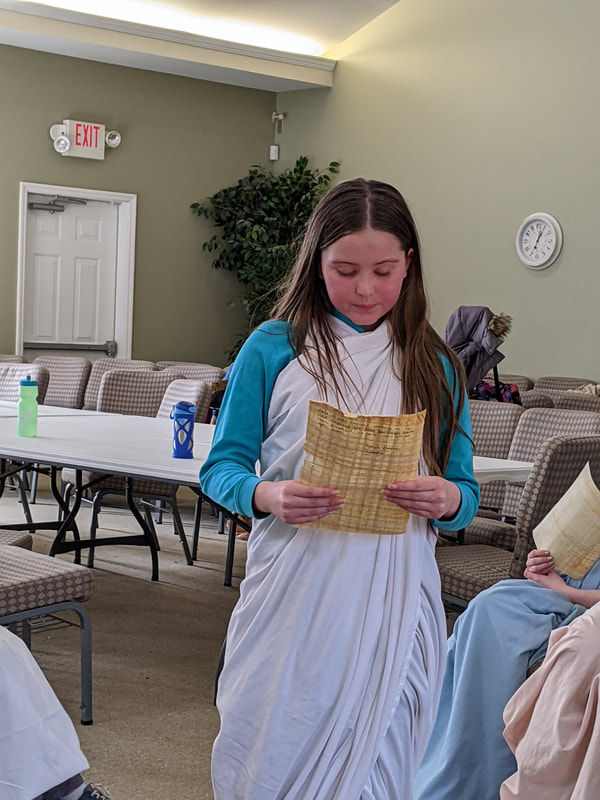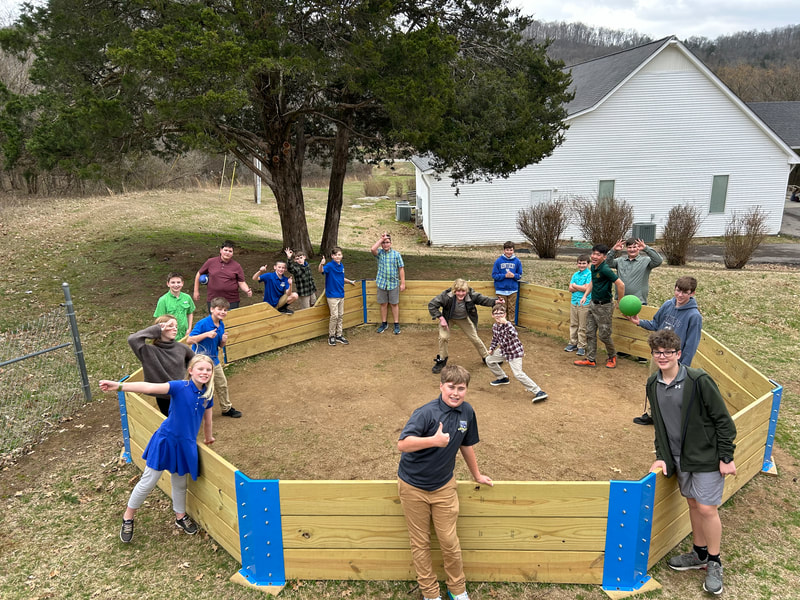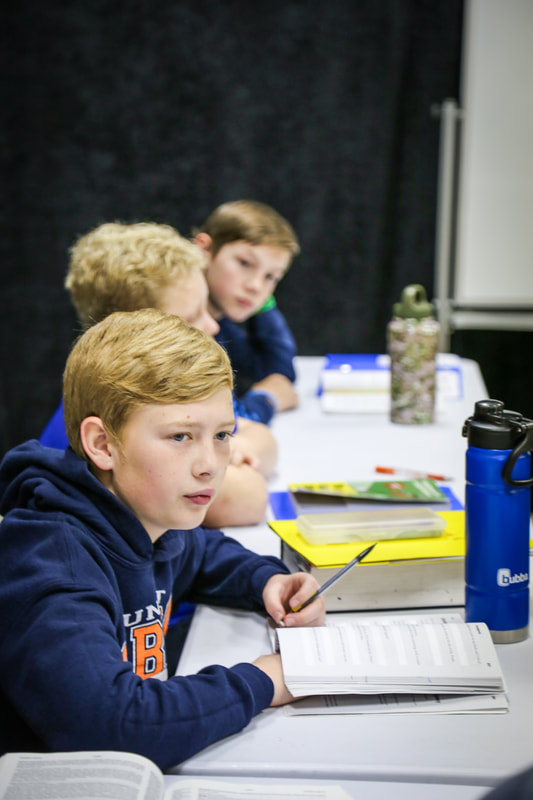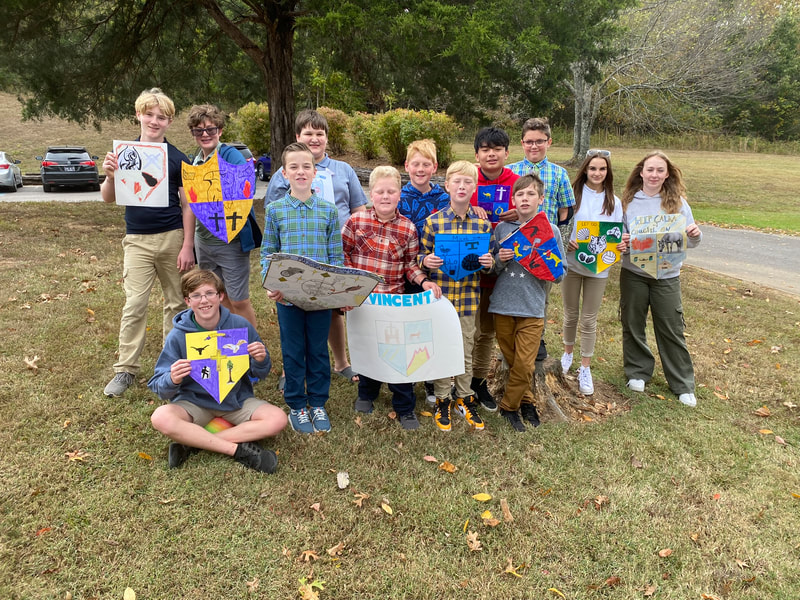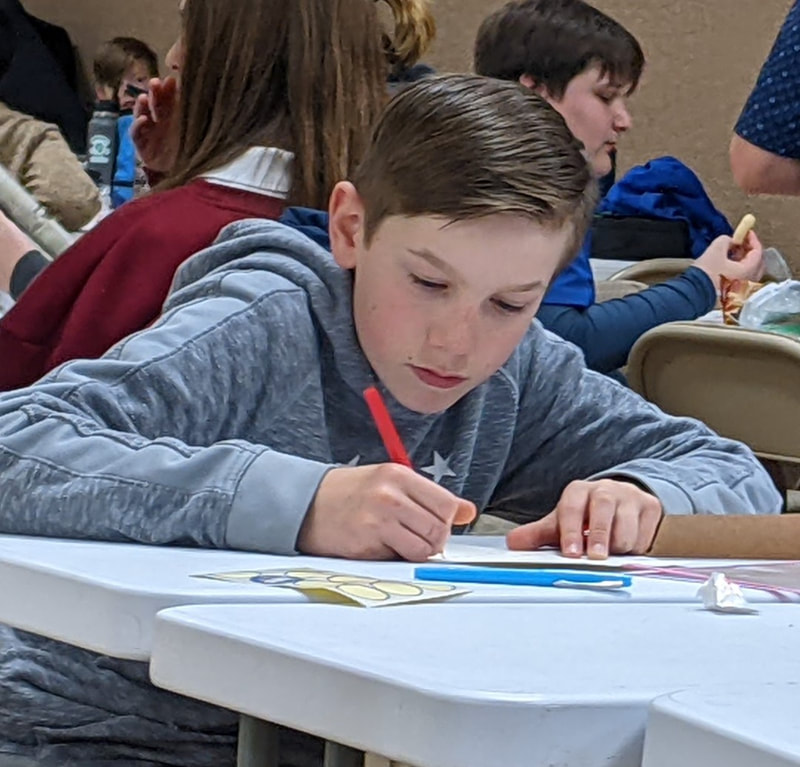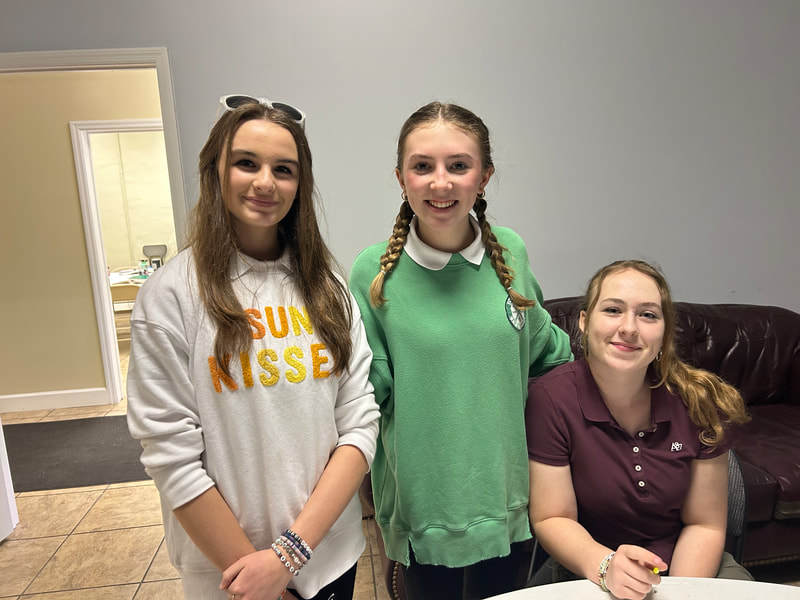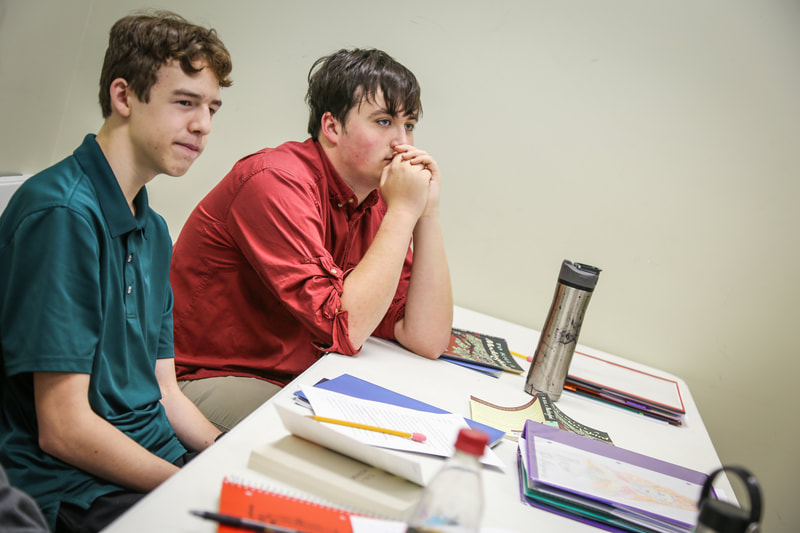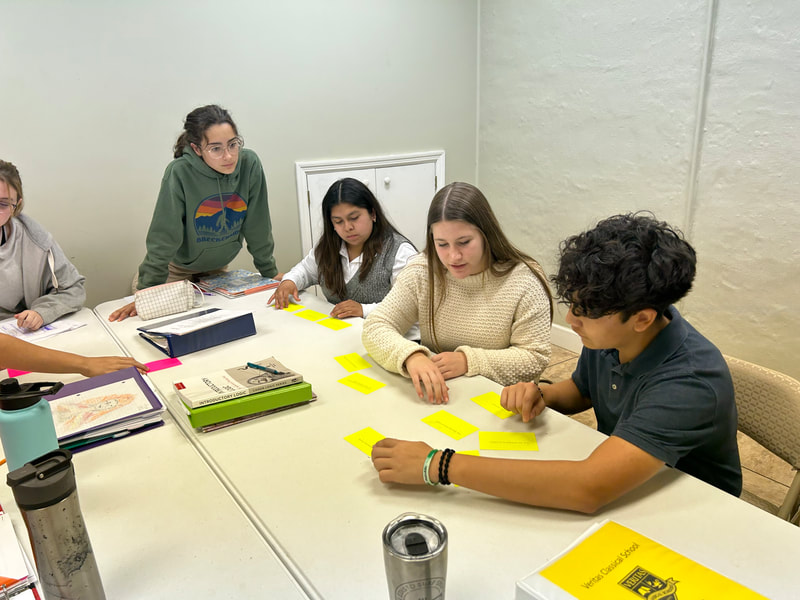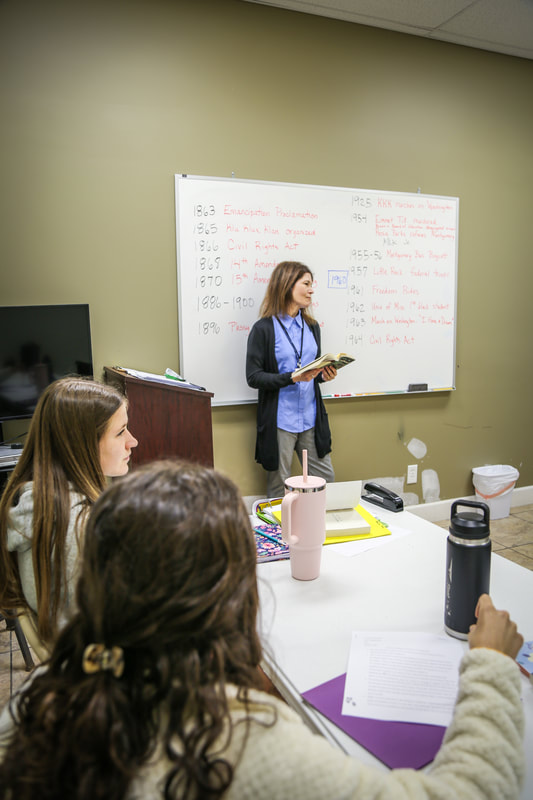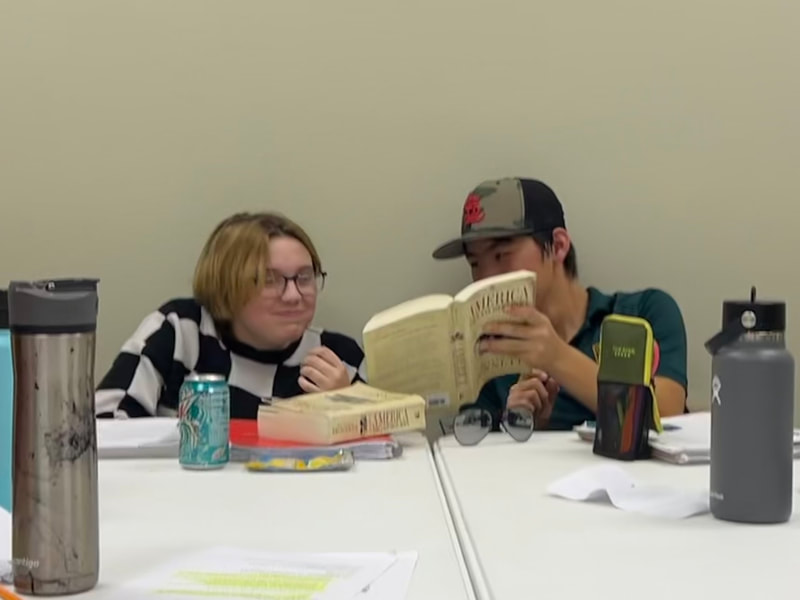Our humanities curriculum leans heavily on the principles of classical education, with a Charlotte Mason influence in the younger grades. Class sizes average between 12-16 students depending on grade level.
Tuesday: Students meet in grade level classes from 9:00-2:00 for an electives-themed day.
Subjects include science, art (K-4th), and Spanish, with optional math classes from 2-3:30.
Thursday: Students meet in grade level classes from 9:00-2:00 for a humanities-themed day.
Subjects include Bible, language arts, literature, history & geography, fine arts, and critical thinking.
Families may choose to attend one or both days.
Subjects include science, art (K-4th), and Spanish, with optional math classes from 2-3:30.
Thursday: Students meet in grade level classes from 9:00-2:00 for a humanities-themed day.
Subjects include Bible, language arts, literature, history & geography, fine arts, and critical thinking.
Families may choose to attend one or both days.
Click below for more details about each grade level!
Kindergarten
Kindergarten at Veritas focuses on a gentle introduction to formal learning through a focus on routines, relationships, and early reading skills. Our curriculum prioritizes multi-sensory, hands-on learning experiences in all subjects. In addition to phonics and language arts, students will engage in Bible, science, poetry, art, and STEM activities.
first grade
First grade is considered the beginning of a formal classical education. We use Sonlight Language Arts to introduce reading and writing skills in a holistic way, as well as Explode the Code for explicit phonics instruction. Students enter the world of Ancient Times through their study of history, supplemented with literature, artist, and composer study. On Tuesdays, they will learn astronomy with Apologia Science.
second grade
Second grade builds upon the literacy skills gained in K-1st. Students generally begin reading and writing more independently during the year. History, literature, artist and composer studies immerse the class into the Middle Ages. Students learn about botany with Apologia Science and weekly hands-on explorations and nature walks.
third grade
Third grade introduces students to a formal grammar and composition curriculum. History focuses on the early modern time period, and students begin to independently write narrations that reflect their learning. Themed literature and hands-on projects, as well as artist and composer study, help to round out the humanities day. Science students study land animals using Apologia.
fourth grade
Fourth graders build upon the new ideas learned the year prior as they extend their knowledge of grammar and composition skills. Students become more independent in their studies, with parents acting more as facilitators of history & literature discussions, and editors of language arts assignments. Our elementary world history curriculum ends with a study of modern times, including the study of artists and composers from the 20th century. Ocean animals are studied in science class, using Apologia.
Fifth Grade
Fifth graders transition to a more independent, middle-school mode of learning. Assignment sheets are written to them, and most students can complete the majority of their assignments alone, with parents checking work/offering feedback as needed. History cycles back to Ancient Times and students learn how the content of the Old Testament intersect with other historical events. More frequent progress monitoring begins with short quizzes and periodic tests. Electives are offered a la carte on Tuesdays.
Sixth Grade
Sixth graders build upon the content learned the year prior as they deepen their knowledge of grammar, composition, vocabulary, and spelling. Students study American history and analyze literature through discussion, response journals, and Socratic questioning. More projects and oral presentations are incorporated into the curriculum as well.
Seventh/Eighth Grade
Veritas divides middle and high school teaching into two halves of each humanities day: English/language arts, and Bible/history/logic. This allows our teachers to delve deeper into their content areas. At this stage, students are expected to apply the composition skills learned through IEW in 3rd-6th grade to their various writing assignments. The curriculum rotates between Year A (Renaissance and Reformation) and Year B (Modern History).
High School
Our high school class is open to students in grades 9-12, but will have mostly ninth and tenth graders next year (2024-25). The curriculum is written for all grades, but some assignments will differ slightly depending on the grade level. There are four different tracks for high school, and a student may complete these in any order. Students will be able to earn most of the core credits for graduation at Veritas if they choose.
